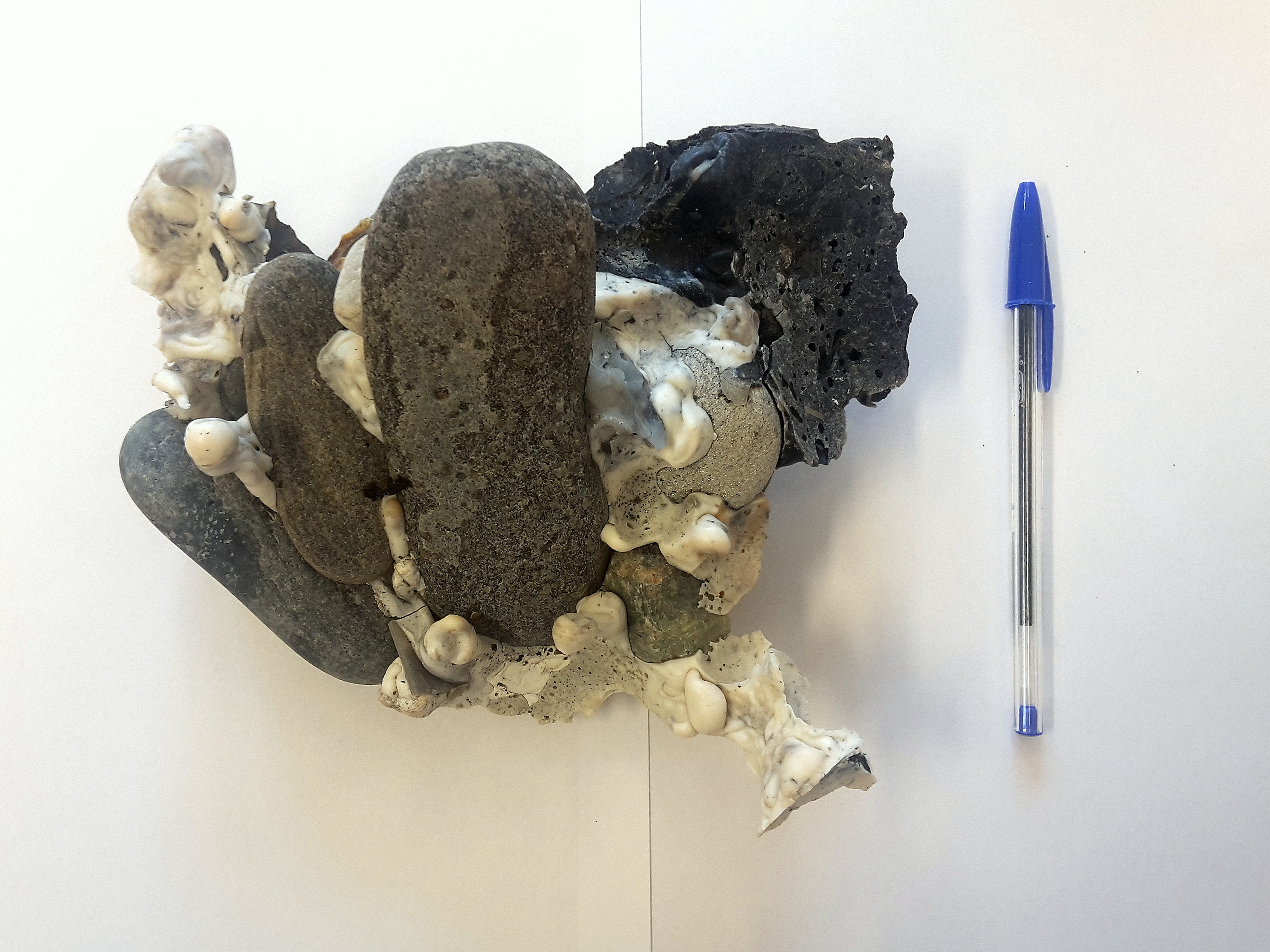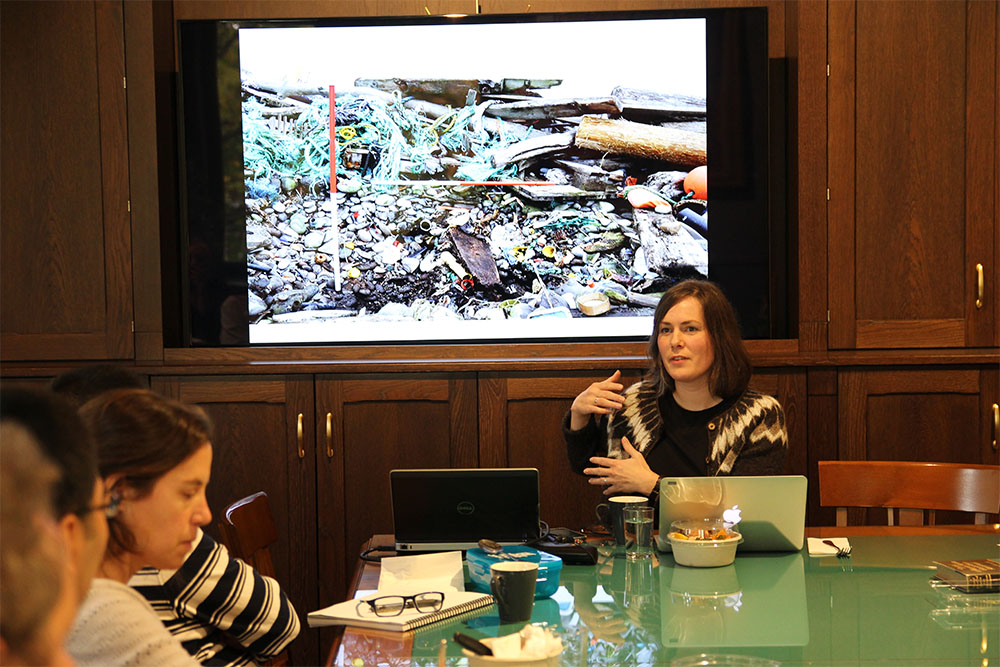We are not in control of the afterlife of things
In recent years, Pétursdóttir has been exploring a remote beach on Sværholt Peninsula in northern Norway. The area has been abandoned for the past forty-five to fifty years, but the continued shoring of different materials—driftwood, fishing gear, plastic containers, and more—means the area remains profoundly affected by human presence:
– Coming from archaeology, we try to go beyond the things that we understand as reflections of a culture and social system that has gone; we use these fragments to reconstruct a living past.
Examining what many people consider ‘waste’, Pétursdóttir wants to challenge traditional archaeology. Much of the material she analyses cannot be traced to a specific place or culture—it has, moreover, been thoroughly transformed and removed from its initial functions:
– The materials don’t reflect the history of where they are found, which makes it impossible to approach this material through a traditional archaeological approach.
Pétursdóttir adds:
– Microplastics are part of our food chain, which is terrifying. We are not in charge of the afterlife of things. My toothbrush might end up as microplastic in the stomach of my descendants.
Read about the CAS project on which Pétursdóttir is working
From ‘waste’ to ‘drift matter’
Pétursdóttir examines what many people consider ‘waste’ but she chooses to call ‘drift matter’, which she argues is a more encompassing or descriptive term than waste:
– Waste, however, is a culturally charged category that we, humans, use to define certain things. It is also a designation employed to grasp and control a certain type of material, as reflected in the notion of ‘waste management’.
Pétursdóttir elaborates:
– The paradox is, however, that more and more things are produced as waste, and more and more things escape our ‘management’, and will outlive us by hundreds and thousands of years. Because of this, I prefer to refer to my shore assemblages not as ‘waste’ but as ‘drift matter’.

On average, a plastic bag is used for twelve minutes—the lifetime it shares with us—but we estimate that it can live up to 500 years:
– People don’t consider the afterlife of a coffee cup.
Disturbingly aesthetic
The material of marine debris can drift long distances, and is a global phenomenon. It is estimated that fifty to eighty per cent of this material is made of some form of plastic:
– Marine debris is extremely varied and, because of its drift, it cannot be expected to represent socio-political or cultural aspects of the place or area in which it is found. This makes drift matter very different from more traditional archaeological material.
The term ‘drift matter’ enables us to talk about all kinds of floating material, including both marine debris (anthropogenic material) and materials such as sea weed, drift wood, and beach sediment, and how they interact. Pétursdóttir observes:
– For instance, drift ice is important for how drift matter floats around—much would have sunk to the bottom without it. And considering the entanglement of different things on the beach, it may be argued that these materials are in between nature and culture, artefact and ecofact.
It has been estimated that about seventy per cent of the total bulk of marine debris is afloat in surface waters, fifteen per cent sinks to the bottom, and fifteen per cent washes onto the shore:
– I mostly work with the material on the shore: layers of layers of things, debris, kelp, and driftwood that relentlessly pile up on many beaches along the North Atlantic coast.
The notion of ‘drift matter’ also resonates well with the deep historical legacy of drift beaches and drift matter, Pétursdóttir explains:
– According to Landnámabók, a medieval Icelandic book that describes the pioneer Norse settlement of Iceland, the first settlers threw wooden poles overboard and followed their drift to establish their settlement where they reached land. This may have been both a practical and a ritual procedure.
Probably connected to her photography skills, at one point Pétursdóttir describes the material as ‘disturbingly aesthetic’:
– If you take it seriously, this matter is already a part of the environment, so my question is: how is this not of interest in archaeology?
Humans as the God species
Pétursdóttir argues that we cannot make distinctions between nature and culture, objects and minds, and the materials she studies are examples of this: plastiglomerates, or a shoe ‘growing back’ into nature.
Due to human impact on Earth, many scientists and environmentalists argue that we are living in a new geological era—the Anthropocene:
– This term actually means ‘the age of man’: our use of the planet, our handling of other species, have been dominated by us understanding ourselves as those with power.

Although acknowledging the Anthropocene, we must try to ‘deconstruct this human-centered idea’, Pétursdóttir argues. She continues,
– Often, we talk about humans as a kind of God species, both in terms of how we have handled our environment and also in terms of how we as ‘stewards’ of the planet must plan and secure a viable future. Such discourse risks becoming both arrogant and misrepresentative of our significance and place on this planet. I am not saying we can’t do anything—in fact we must—but we also have to rethink our place in the environment, rather than seeing ourselves as some godly creatures apart from and in control of that environment.